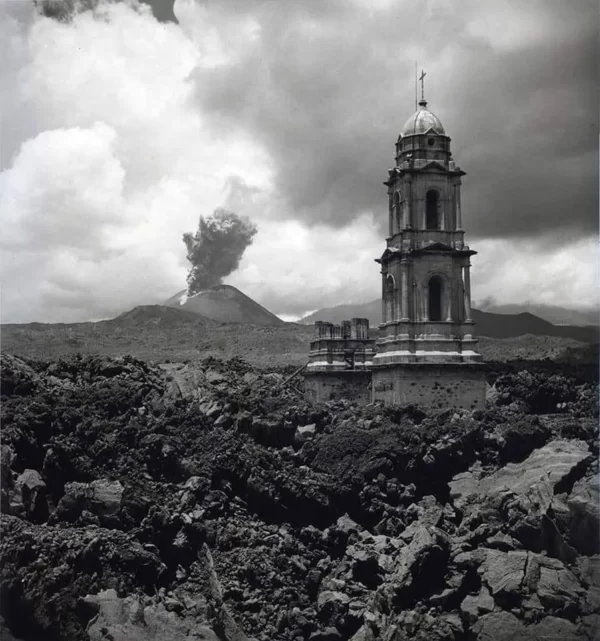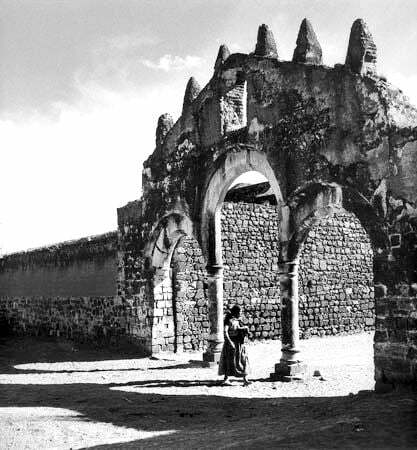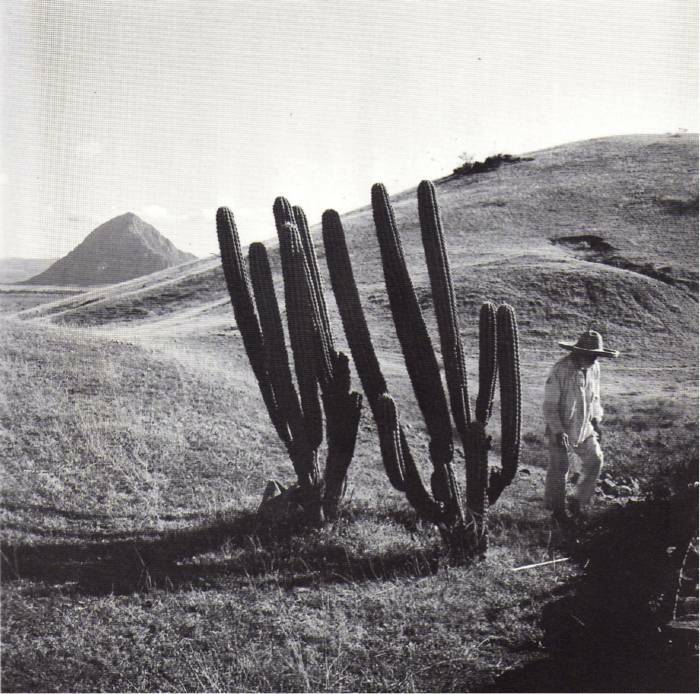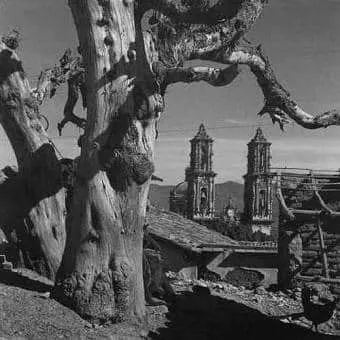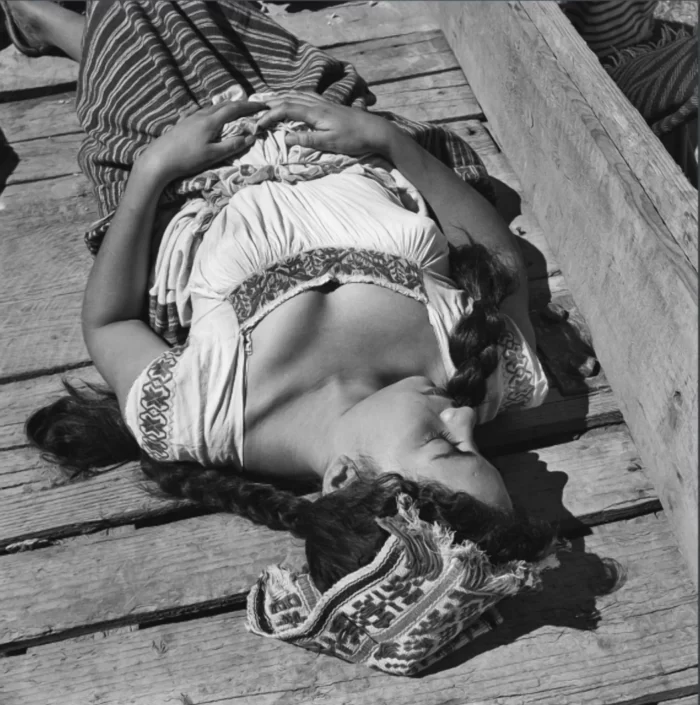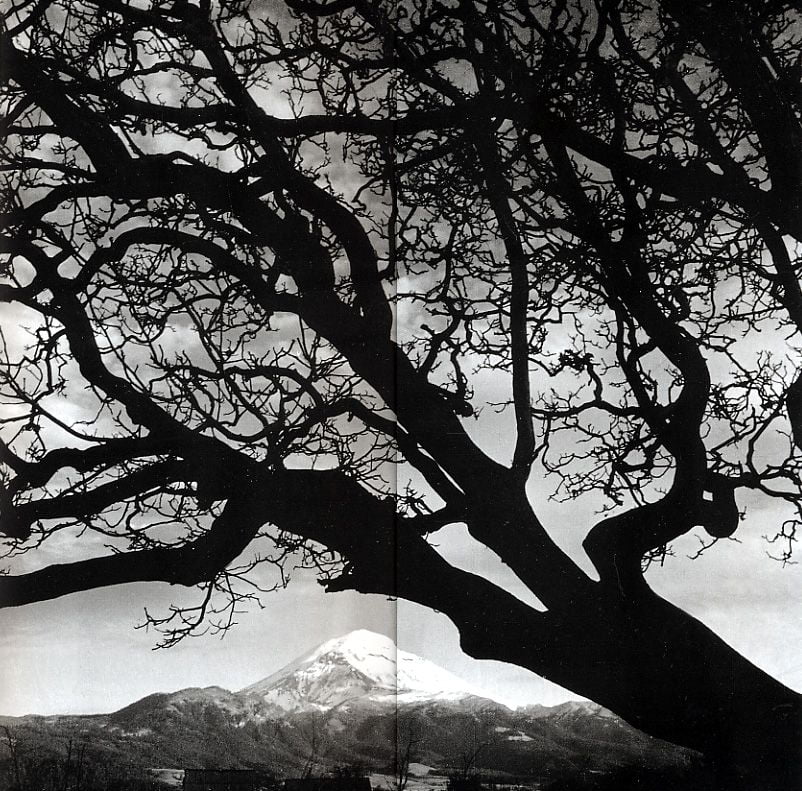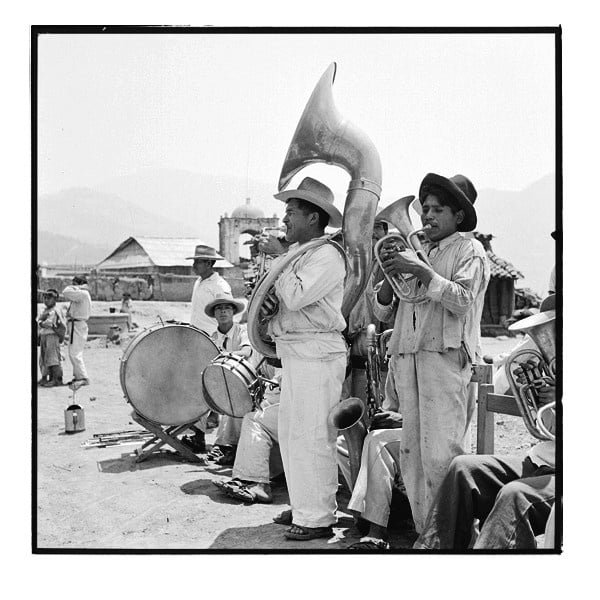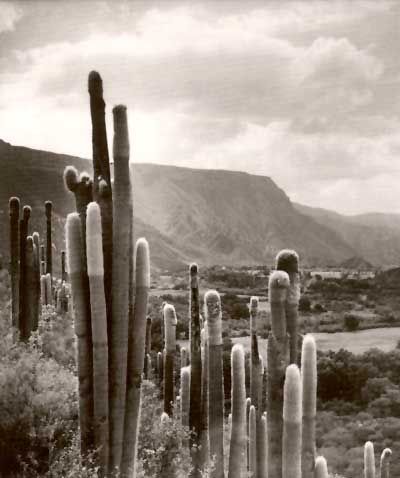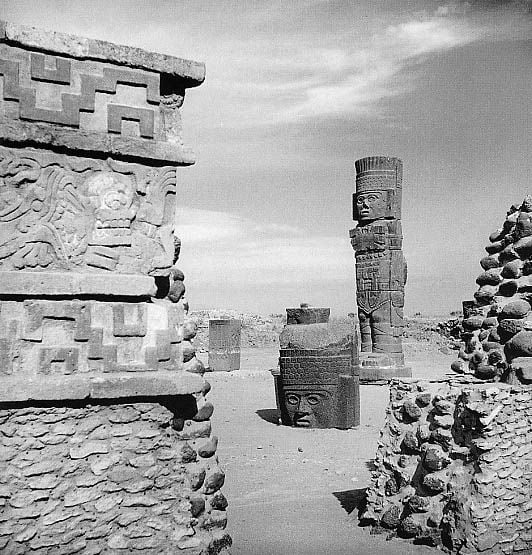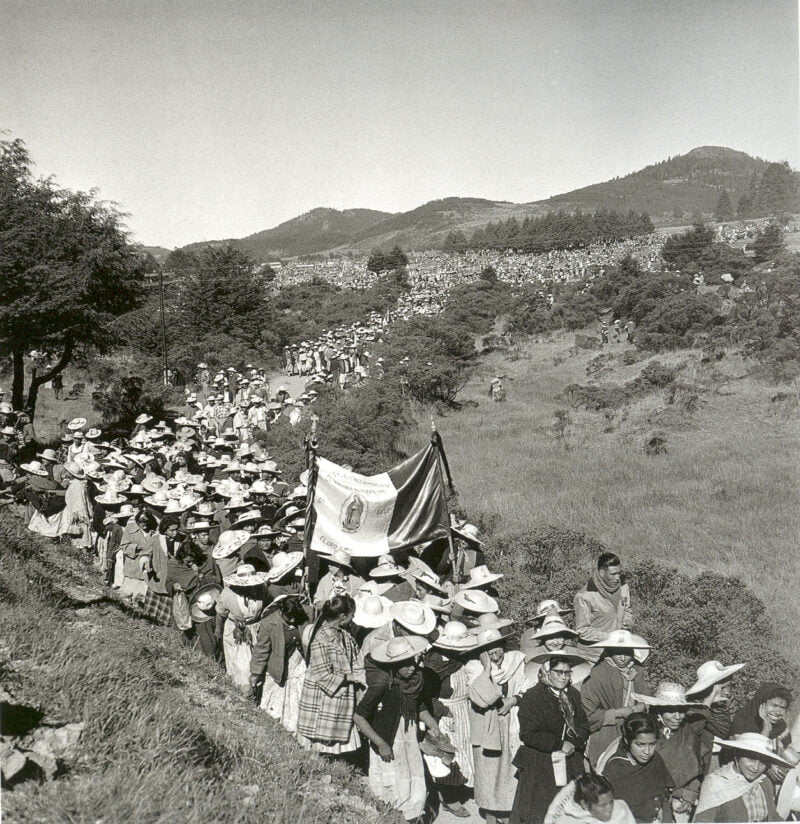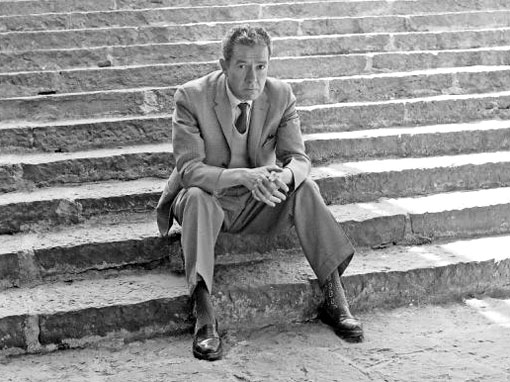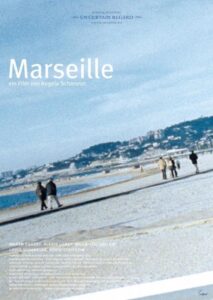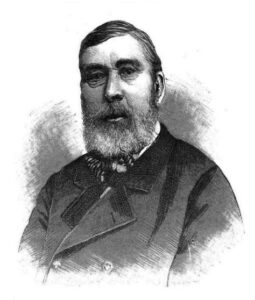Reality tells me nothing literally, although it can tell me photographically.
Juan Nepomuceno Carlos Pérez Rulfo Vizcaíno, better known as Juan Rulfo He was born in Apulco, a very small town that does not appear on maps, "a ravine with crooked and steep streets", belonging to San Gabriel, district of Sayula (State of Jalisco), on May 16, 1917, within a wealthy family who lost everything in the Cristero War.
My name is Juan Nepomuceno Carlos Pérez Rulfo Vizcaíno. They piled up all the names of my paternal and maternal ancestors, as if I were the offspring of a bunch of bananas, and although I prefer the verb to bunch, I would have liked a simpler name. In the Pérez Rulfo family, there was never much peace, everyone died early at the age of 33 and they were all killed from behind. My father's name was Juan Nepomuceno, my paternal grandfather was Carlos Vizcaíno, I have Rulfo for Juan del Rulfo, an adventurer who arrived in Mexico at the end of the 18th century.
Rulfo lived in the townorn San Gabriel until the early death of his father – assassinated in 1923, shot in the neck – and the sudden death of his mother, in 1927.
As a child, he witnessed the atrocities of the Mexican Revolution (1910-1920) and the civil war, known as the Cristiada (1926-1929), which drastically marked his childhood. The violent death of his father, grandfather and two uncles made him a morose and lonely child.
After the death of his grandfather, he was admitted to the orphanage Luis Silva from Guadalajara. She had previously studied with the Josefinas nuns of San Gabriel.
It was the only orphanage that existed. And the rich of Guadalajara were interned there, like in a correctional facility. We who came from the towns, took everything as a matter of course. But for many people, especially wealthy children from Guadalajara, the way to punish their children was to put them in this orphanage. The discipline was terrible, the system was prison. The only thing I learned there was to get depressed, it was one of the times in which I found myselftoIt's lonely and where I got a depressive state that still can't be cured, he confessed to Joaquín Soler Serrano in the program Thoroughly TVE, broadcast at the end of the seventies.

He spent four years in that orphanage, from the age of ten to fourteen. Surely those four years that he spent in Guadalajara forever left the stamp of loneliness marked on his soul.
The village priest, wishing to keep the parish library, entrusted it to the boy's grandmother. Rulfo thus had within his reach, when he had barely turned eight, all those books that soon filled his leisure hours.
It's kind of hard to grow up knowing that the thing we can hold on to for our roots is dead., will say one of the characters in Tell them not to kill me!
His biographers tend to highlight his orphanhood as a determining factor at the start of his artistic and literary vocation. Rulfo himself declared that between the ages of five and 13 he only knew death.
As he matured, Rulfo poured all the accumulated pain into one of the most important works of contemporary literature in the Spanish language: Pedro Páramo.. (Fernando Diaz)

I had a very hard childhood, very difficult. A family that fell apart easily in a place that was totally destroyed.Yodo. From my father and my mother, including all my father's brothers were killed. So I lived in a zone of devastation. Not just human devastation, but geographic devastation. I never found […] the logic of all that. It cannot be attributed to the revolution. It was more of an atavistic thing, a thing of destiny, an illogical thing. Until today I have not found the point of support that shows me why in this family of mine this series of murders and cruelties happened in this way, and so systematically.. Juan Rulfo
DDue to the revolutionary violence, Juan Rulfo's family had to constantly change their residence. Wandering that would mark his life forever. Indeed, Rulfo performed various trades, and countless changes of address. Rather odd jobs, like immigration agent, rent collector. He worked in advertising, and in the sales department of a tire firm, Goodrich-Euzkadi, as a tire sales agent, touring the entire country.
La itinerancia de sus actividades favoreció mucho su labor fotográfica.
His son Juan Carlos remembers: It was hard for him to survive, sometimes there was nothing to eat at home. He sold tires in difficult times in the towns. And on that trip, they offered to make the travel guides. For that he took photos.
There is a deep connection between Rulfo's unhappy, traumatic childhood (his tormented and erratic personality) and the harrowing atmosphere of his work.
"I don't know if I live or if I remember," Albert Camus wrote in between yes and no. This phrase could be the leitmotif of all Rulf's work.

I turn to everyone
sides and look at the plain. So much and so much land for
nothing. One's eyes slip when not finding
thing to stop them.
Rulfo pointed out in an interview that “The true history of the Mexican revolution is in literature. Historians are very partial”, expressing a deep skepticism before the possibility of finding an objective historical truth.
Literature is a lie to tell the truth. Juan Rulfo
Pedro Paramo es una obra de rememoración y de reconstrucción de hechos que se imbrican en la memoria colectiva e individual. Las lagunas de su memoria las llenó Rulfo con la imaginación. La ficción está ahí para reparar, colmar, ausencias y silencios.
Less than three hundred pages divided into two books were enough for him to become a classic, enduring figure of Latin American and universal literature.
(Elvio Gandolfo)
La fragmented narrative of Pedro Paramo, made of sudden changes and temporary jumps (ellipses, analepsis, prolepsis) coincides with the functioning of post-traumatic memory. The traumatic experience of the successive loss of his close relatives -father, mother, grandfather, uncles- had a tremendous emotional impact on the writer.
He said in a report:I think it's a difficult novel [Pedro Páramo], very difficult, but it was made with that intention. You need to read it three times to understand it, my generation did not understand it or find it interesting. It has been difficult due to the very structure of the work. It is difficult to rewrite a novel like this because it is structured in such a way that it seems to have no structure when it is what sustains the novel, the structure, right?
Rulfo lived in a context of war and violence at a very young age, he was only 6 years old. He witnessed very harsh events. For a young child, it is very difficult to assimilate and overcome traumatic experiences. The (unconscious) choice of the fragmentary and discontinuous narrative structure of his novel is not accidental: it coincides with the structure of traumatic memory, which is made up of emotional blocks, failures and gaps. Traumatic memory works differently.
An excessively violent and intense situation is not integrated into the conscious memory of the subject and is not processed as a memory, it is lodged in the dark dungeons of oblivion and selective memory. This does not allow the event to be expressed verbally and left behind, but remains as a trauma that resurfaces in the form of a flashback triggered by a smell, a sound or a detail, and plunges the person into an almost hallucination of which they are not aware. remembers the exact context, but a detail and a flow of intense emotions in a near hallucination of which he does not remember the exact context, but a detail and a flow of intense emotions. The memory of the trauma is fragmentary, selective and therefore incomplete, and since when the drama happened the subject focused only on a detail that marked him forever, it is called hypermnesia, since he forgot the general context.. (cf. Andrea Bizberg, The memory of the trauma)
Pedro Páramo is an impressive monument of narrative condensation, a book built from silencios, de hilos colgantes y de escenas cortadas.
(Javier Cercas)
As the writer Rodríguez Monegal pointed out, from the first paragraph ofPedro Paramowe meet a man who “She searches for her identity in the search for her dead father, to immediately discover that the references of her identity are in the entire town of Comala and in each of its ghostly inhabitants.
I hadn't written a single page, but my head was spinning. And there was one thing He gave me the key to get it out, that is, to unthread that still-entangled thread. It was when I returned to the town where I lived, 30 years later, and found it uninhabited. It's a town I've known I, of about seven thousand, eight thousand inhabitants. It had 150 inhabitants when I arrived. people will had gone like this But someone came up with the idea of planting of casuarinas the streets of the town. and me he had to be there one night, and it is a town where the wind blows a lot, it is at the foot of the Sierra Mother. And at night the casuarinas low, they howl And the wind. Then I understood that loneliness of Comala, of that place. (cf. R. Roffé, Juan Rulfo. armed autobiography, Buenos Aires, ed.Corregidor, 1973).

DFor 23 years, Juan Rulfo worked in the Publications Department of the Institute, as editor of a collection of contemporary anthropology and editor, during which time more than 235 books on social anthropology on 56 indigenous communities in Mexico were published.
ANDIn the opinion of Diego Prieto, Juan Rulfo “is the greatest anthropologist of Mexican writers”, in terms of someone who accounts for the human phenomenon and is capable of translating a cultural universe into others.” In Pedro Paramo Y The Burning Plain, but also in his photography and even in the titles he edited for the then National Indigenous Institute, there are keys to reread his relationship with anthropology:
Dreams are in the thought of many indigenous peoples and peasants in Mexico, a fundamental element to approach reality, talk with ancestors and cure diseases. if in Pedro Paramo the dead are present, it is because people believe so. In Rulfo we will find the recovery of the circular time of the ancient peoples of Mexico, a time that, to this day, is endorsed by indigenous and non-indigenous people. (cf. Diego Prieto, Juan Rulfo. Looks crossed between literature and anthropology).
In 1947 he married Clara Angelina Aparicio Reyes, with whom he had four children. Their Letters to Clara, written between 1944 and 1950, were published in 2012.
We had a field, with an orchard, we went to cut pears and apples, avocados, to be with the dogs. The smell of burning grass reminds me a lot of his days. We removed grass, we made a bonfire ”, recalls his son Juan Carlos. Conversations revolved around music, photography, cameras. Not so much literature. He didn't like it. It was rude to talk about literature at home. A tasty conversation was talking about avocados or why put a tree in such a place. In the orchard, at the foot of the Popocatépetl volcano, talking with the man who helped us was a delight. There was the flavor, in talking with people.
In 1978, García Márquez, who knew by heart entire paragraphs of Pedro Paramo, wrote :
"Juan Rulfo, on the other hand, is criticized a lot for having only written Pedro Paramo. She is always pestering him asking when she will have another book. It's a mistake. First of all, for me Rulfo's stories are as important as his novel Pedro Paramo, which, I repeat, is for me, if not the best, if not the longest, if not the most important, yes, the most beautiful of the novels that have ever been written in the Spanish language. I never ask a writer why he doesn't write more. But in the case of Rulfo I am much more careful. if i had written Pedro Paramo I would never worry or write again in my life.”
García Márquez shared with Rulfo the subject of loneliness, which after all is the loneliness of Latin America.
TO Starting in the mid-50s, Rulfo worked as a film scriptwriter, and in the production of some films; but also as a photographer, assessor of historical verisimilitude (The hidden) and actor- like in the movie There are no thieves in this town. He also wrote the texts for films such as wounded dove (1963) or The golden rooster (1967), co-written with Carlos Fuentes, Roberto Gavaldón and Gabriel García Márquez and Mixed Dances, documental que hizo con Walter Reuter. Con Roberto Gavaldón colaboró también en un otro documental sobre la terminal del Valle de México, y trabajó con Antonio Reynoso y Rafael Corkidi en the dispossession, where he also took photographs.
At the end of 1955 the first film based on one of his stories was shot, talpa. Rulfo was present throughout the shoot and photographed the actors while they rested.
Juan Rulfo was a complete artist, writer, screenwriter and photographer.ortalent graph, bequeathed around 6 thousand negatives to the Juan Rulfo Foundation that preserves his work, so that photography cannot be considered as a mere hobby of the author.
He began taking photographs around 1930, an activity that he combined with his work, on his trips as a tire salesman, and his love for mountaineering; He walked so much that his aunt Lola nicknamed him Juan pata de perro.
Rulfo went out to tour the country, camera in hand —she was his life partner— from the late 1930s to 1962, some signed on the back. She used Rolleiflex cameras (six by six). For those years she entered the INI (National Indigenous Institute) and having a rigid schedule did not allow her to sit down to write and take photos.
SHis photographs reveal his interest in architecture (pre-Columbian buildings and temples, baroque churches, Hispanic palaces and abandoned haciendas, ruins), indigenismo (Oaxaca), portraits (of writers, friends and family) and self-portraits, but also landscapes (skies, plains, moors, mountains and volcanoes, trees, rocks, beaches and plants), cinema, modern dance in the open air, railways - his passion (rails, locomotives, freight cars) - and even aerial photos.
His photos first appeared in the magazine America, with the title 11 Photographs by Juan Rulfo and in magazines and publications: Map, indigenous action, events for all and the Road Guide of the Goodrich-Euzcadi.

Lyrics are a hobby that I share with my other great hobby: photography. Sometimes I feel like going out into the countryside with my camera; others, to stay at home, reading; some, very few, I lock myself up to write, at night and by hand, commented in an interview he gave to the also writer and poet, José Emilio Pacheco.
When I took photographs I didn't think about literature, they are two very different genres.
Juan Rulfo
He studied literature, photography and anthropology in a self-taught way.
Antes de darse a conocer como escritor practicó este oficio: a los 17 años publicó su primera foto en la revista America. "What we wanted to show in the exhibition is thatRulfo was not the amateur photographer who takes what he suddenly sees on the street, but rather his photographs are structured projects, he was a professional photographer”. declared the architect Víctor Jiménez, director of the Juan Rulfo Foundation.

ANDn 1980 a large exhibition of his photography (100 photos) was held at the National Palace of Fine Arts, as part of a national Tribute (title of the exhibition catalogue).
A subject of great importance for Juan Rulfo was that of the architecture of Mexico, which he took approximately half of his photographs. In 2002 the book appeared Juan Rulfo, Letters and images, by Editorial RM, with 116 photographs and 16 of his texts dedicated to different buildings and sites of heritage and architectural interest in Mexico.
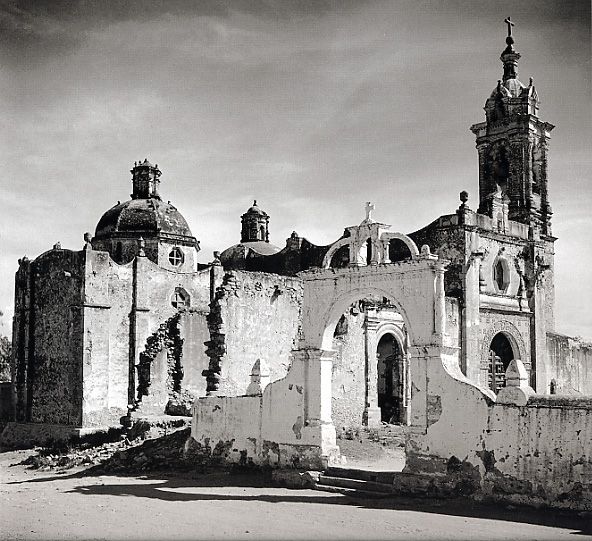
In 1982, 60 photos of Juan Rulfo were exhibited in Berlin, within the Festival Horizon-82.
Juan Rulfo is the best photographer I have met in Latin America, wrote Susan Sontag in her book On Photography.
Wide panoramas that they transmit a documentary serenity that suggests a total absence of intervention, as if it were a photographer who neither adds nor subtracts elements to what "is there", or better, to what "has always been there".. (cf.Modernity and railways: urban trajectories of Juan Rulfo, Francisco Carrillo).
The photos reveal ghostly streets, full of murmurs. not always joy,como dijo Carlos Fuentes, but yes dignity.Muestran personajes intemporales, andariegos, hijos del desconsuelo. Rostros mexicanos, anónimos, suspendidos en un tiempo inmóvil. Campesinos laborando tierras áridas, abrasadas por el sol, invisibilizados por la pobreza.

The peasants feel helpless because the government has abandoned them, because the caciques impose their will, or because the revolutionary process has meant nothing to them: only violence. Rulfo has left us an image of a man haunted by ancient atavisms, abandoned to his loneliness in the midst of a hostile world. It is the x-ray of some lands, those of Jalisco, in which hope is barely visible. It is, ultimately, a projection of how difficult human existence is. Victims and executioners will agree on one point: all of them have been condemned to a loneliness that crosses the border of death. (cf, José Carlos González Boixo, "Juan Rulfo: Nostalgia for Paradise“, in Literature Notebooks)
ANDn October 2010, a large format book was launched, simultaneously in three languages: Spanish, English and Brazilian Portuguese, on the photographic work of Juan Rulfo, 100 photographs of Juan Rulfo(RM Publisher). Extraordinary quality book by Daniele De Luigi – author of the essay, Beyond the silence. Rulfo photographer: problems and interpretations)- and Andrew Dempsey, who dedicated a decade to studying the photographic heritage of the Mexican author. It was printed in Hong Kong by the Japanese Toppan Printing Company. and includes 2 texts by Rulfo dedicated to photography: one on Henri Cartier-Bresson and his Mexican photographs, and another on the work of the Mexican photographer Nacho López, with whom he maintained a friendship.
In 2017, on the occasion of the centenary of the writer, the book was published The photographer Juan Rulfo, compilation of his photographic work.
I greatly admire those who can write about what they hear and see immediately. I cannot penetrate reality: it is mysterious. Juan Rulfo
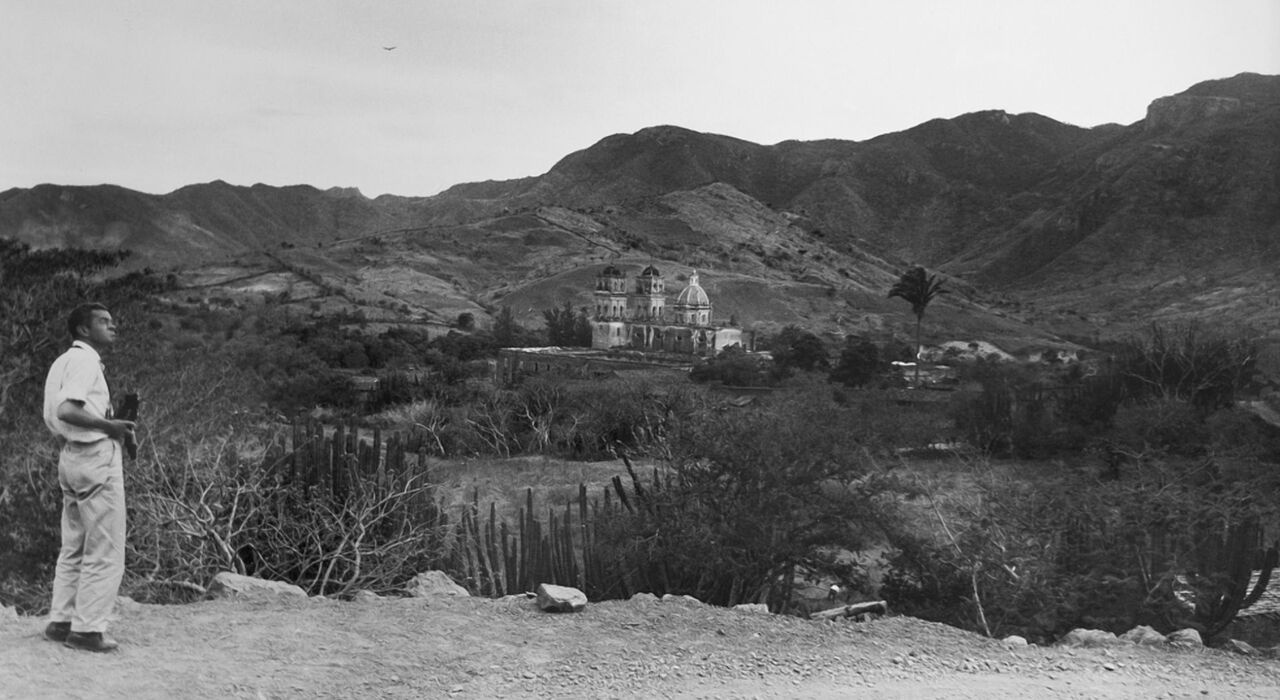
Espacios añorados de montañas y volcanes, llanos infinitos, cielos tormentosos, ruinas de edificios, fragmentos de muros, resonancias de una memoria colectiva hecha de violencia y abusos. Paisajes del alma rulfiana, donde imperan remordimeintos, olvido y soledad. Universo de misantropía e incomunicación.
Hay intimidad y fluidez entre la obra literaria y fotográfica, brotan de un mismo impulso poético, lacónico y evocador, que recuerda mucho el universo pictórico y metafísico de Giorgio de Chirico. La mirada fotografica de Rulfo es compasiva y animista. Naturalista también porque muestra una naturaleza dotada de misterio y de una singular fuerza telúrica. Temáticas rurales y urbanas que entremezclan tradición y modernidad. Estética poética de un mundo inquietante, humilde y decadente.
Images that challenge us and invite us to reflect again and again...

